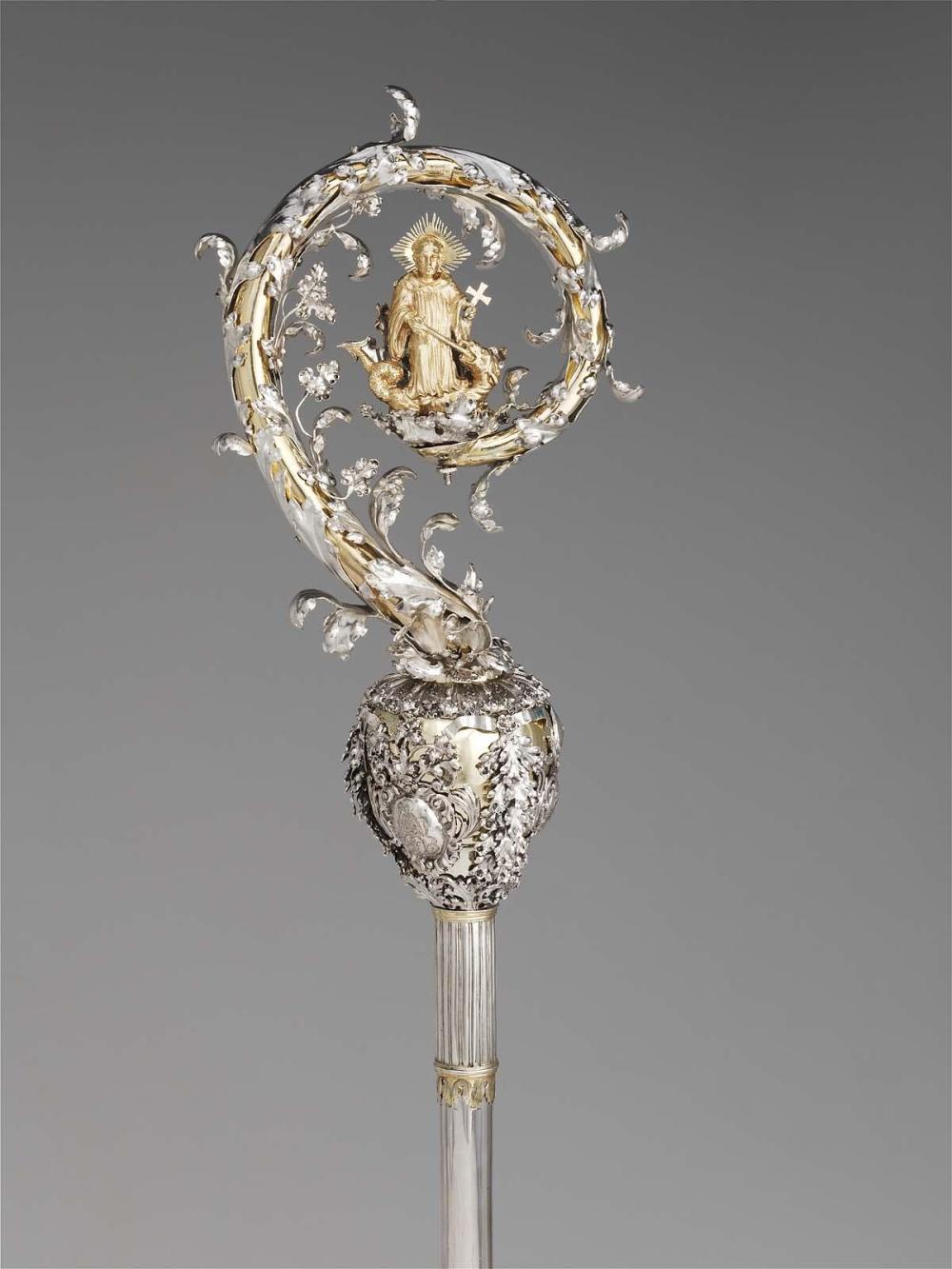Advanced Search
Crosier of Abbot Gerhard of Saint Mang
South German (probably Kempten)
1706
Object Place: Germany
Medium/Technique
Silver, silver-gilt
Dimensions
Overall: 204 cm (80 5/16 in.)
Credit Line
Museum purchase with funds donated anonymously and the William Francis Warden Fund, Frank B. Bemis Fund, Mary S. and Edward J. Holmes Fund, John Lowell Gardner Fund, and by exchange from the Bequest of William A. Coolidge
Accession Number2004.569.1
CollectionsEurope
ClassificationsSilver
This silver crosier, a ceremonial shepherd's crook used in religious processions, was made for Abbot Gerhard, head of the Benedictine monastery of Saint Mang in Bavaria. Its curling leaves and tendrils shimmer in the light and draw attention to the small gilt figure of Saint Magnus of Füssen, the abbey's founder. An inscription around the baluster at the top indicates that the monks of St. Mang presented this crosier to Abbot Gerhard in 1706, ten years after he had begun an ambitious rebuilding campaign that transformed the medieval complex into a magnificent baroque palace.
InscriptionsA dedication from the Benedictine monks at the monastery of St. Mang to their abbot in inscribed on the silver-gilt knop: En/ Pignus Amoris/ GerarDo a fILIIs/ terqVe qVaterqVe faVsta/ nata LItIa festa anaVo/ Voto eXoptanIbVo/ obLatVM"
Provenance1706, Abbot Gerhard (d. 1714), Abbey of St. Mang, Füssen, Bavaria (original commission); until 1803, remained at the Abbey of St. Mang; 1803, transferred to the princes of Oettingen-Wallerstein, Wallerstein Castle, Bavaria [see note 1]; by descent within the family; sold by the princes of Oettingen-Wallerstein to Rudigier Gallery, London and Munich; 2004, sold by Rudigier Gallery to the MFA. (Accession Date: September 22, 2004)
NOTES:
[1] In 1802, the abbey was secularized and made subject to the state of Bavaria. The state granted the abbey to the princely house of Oettingen-Wallerstein, and the church treasures and works of art were sent to Wallerstein Castle. In 1840 they were moved to the Brigidine convent of Maihingen and at the end of World War II, they were moved to the princely residence of Harburg Castle.
NOTES:
[1] In 1802, the abbey was secularized and made subject to the state of Bavaria. The state granted the abbey to the princely house of Oettingen-Wallerstein, and the church treasures and works of art were sent to Wallerstein Castle. In 1840 they were moved to the Brigidine convent of Maihingen and at the end of World War II, they were moved to the princely residence of Harburg Castle.



